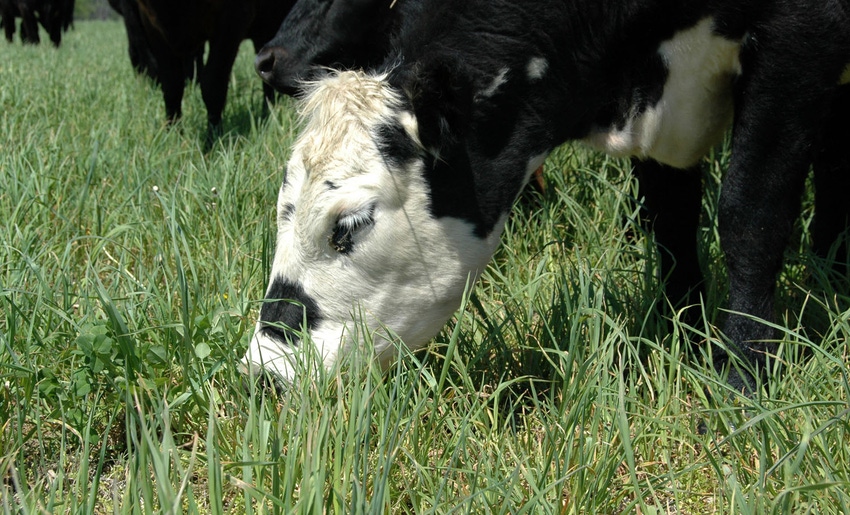August 27, 2019

An Agricultural Research Service ecologist investigated whether changes in forage grasses impact cattle’s ability to gain weight on those grasses.
Global carbon dioxide levels have increased from 330 ppm in 1976 to 405 ppm last year and could reach 600 ppm as soon as 2050. David J. Augustine of Fort Collins, Colorado, and his colleagues simulated the 600 ppm carbon dioxide levels on a mixed grass prairie in the Northern Plains that produces the native grasses that make up the forage used by cattle.
Yearling cattle in rangeland systems in the Northern Plains typically are grazed on forage grasses from May to October before they go to finishing lots where they are fed grain-based diets.
The researchers collected data for seven years and found that the amounts of forage increased, but the decline in nutritional quality was consistent across the years and that by the end of the grazing season, individual cattle would weigh about 30 pounds, or 12%, less. Trying to induce cattle to eat more of the available grass isn't a viable alternative because of its reduced nutritional content, the researchers say.
The study was published last year and since then, Augustine and his colleagues at the Rangeland Resources and Systems Research Unit in Cheyenne, Wyoming and in Fort Collins, have been searching for new ways to help ranchers address the problem.
They say that ranchers may want to consider shortening the traditional grazing season because by late summer forage grasses are less nutritious and the cattle gain only negligible weight from early September to mid-October. Net returns also are consistently higher for cattle removed from grazing and sold in early September, according to another ARS study.
Other options include feeding cattle nutritional supplements, seeding pastures with legumes to add nitrogen to the soil, applying low levels of fertilizer, stimulating new grass growth with prescribed burning and adjusting stocking rates in response to changing weather and climatic conditions that affect grass production.
The researchers remain optimistic. "There is certainly an important issue to be addressed regarding forage quality, but there also are a number of potential solutions," Augustine said.
Source: USDA Agricultural Research Service, which is solely responsible for the information provided and is wholly owned by the source. Informa Business Media and all its subsidiaries are not responsible for any of the content contained in this information asset.
Read more about:
ClimateYou May Also Like




